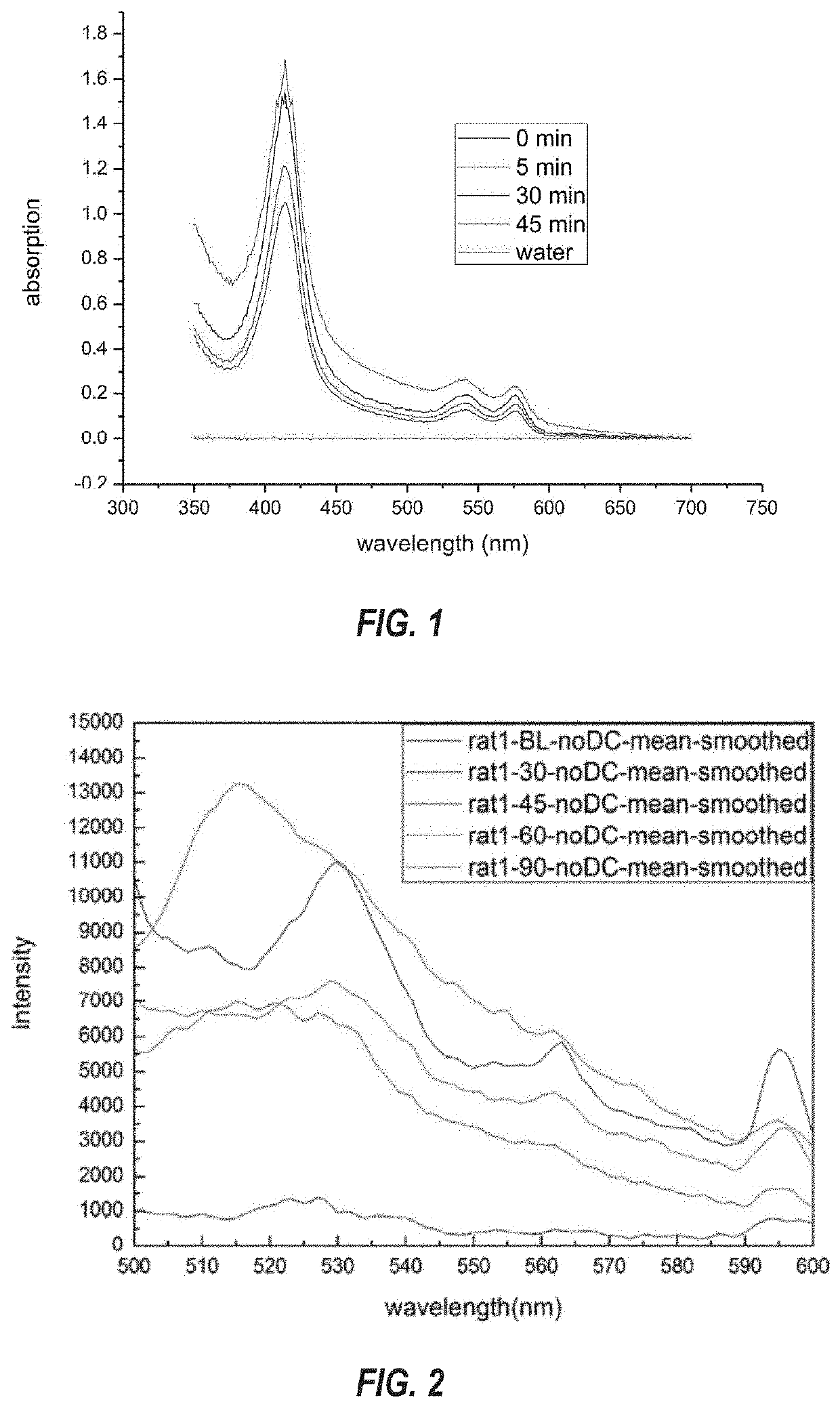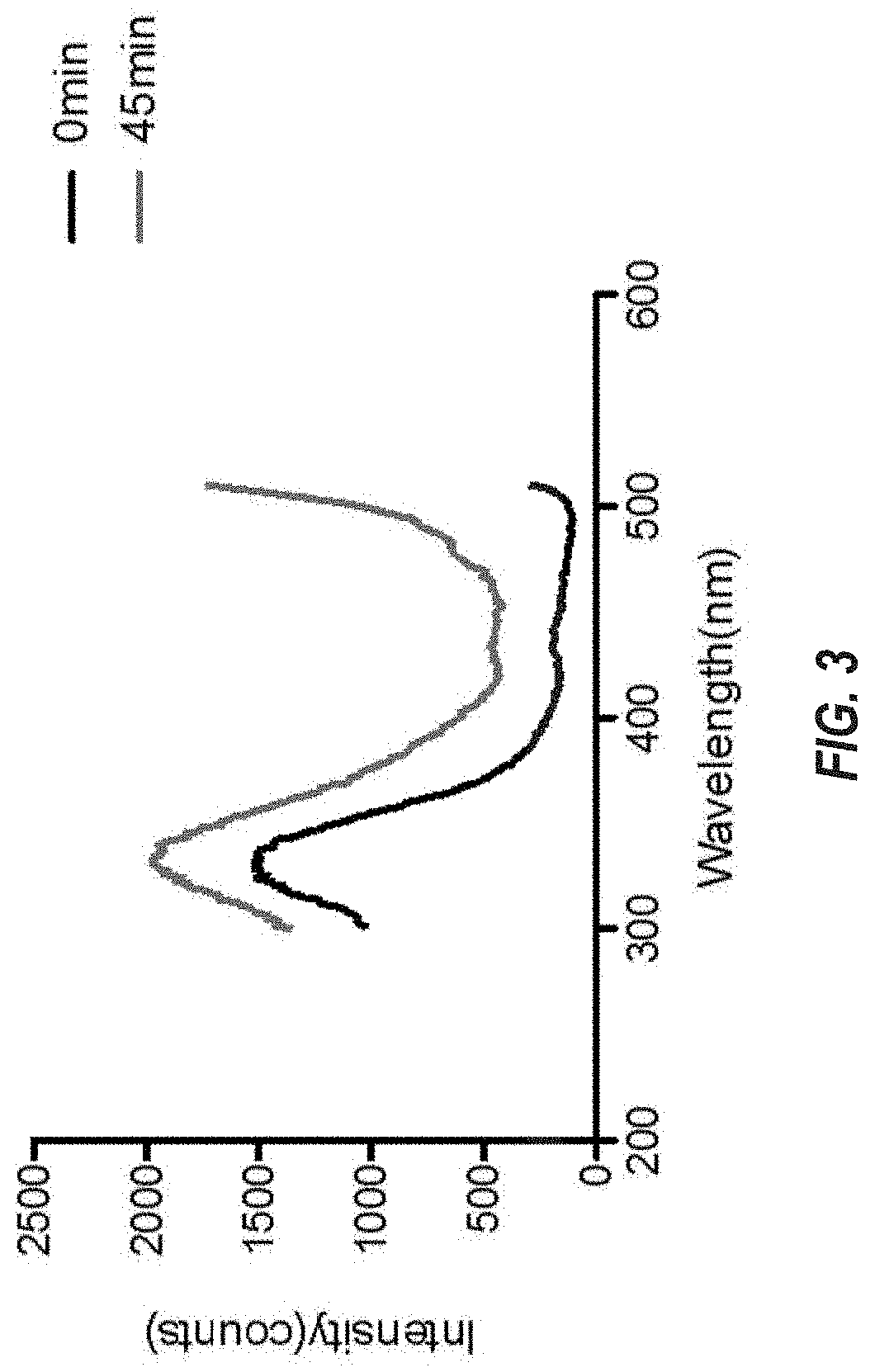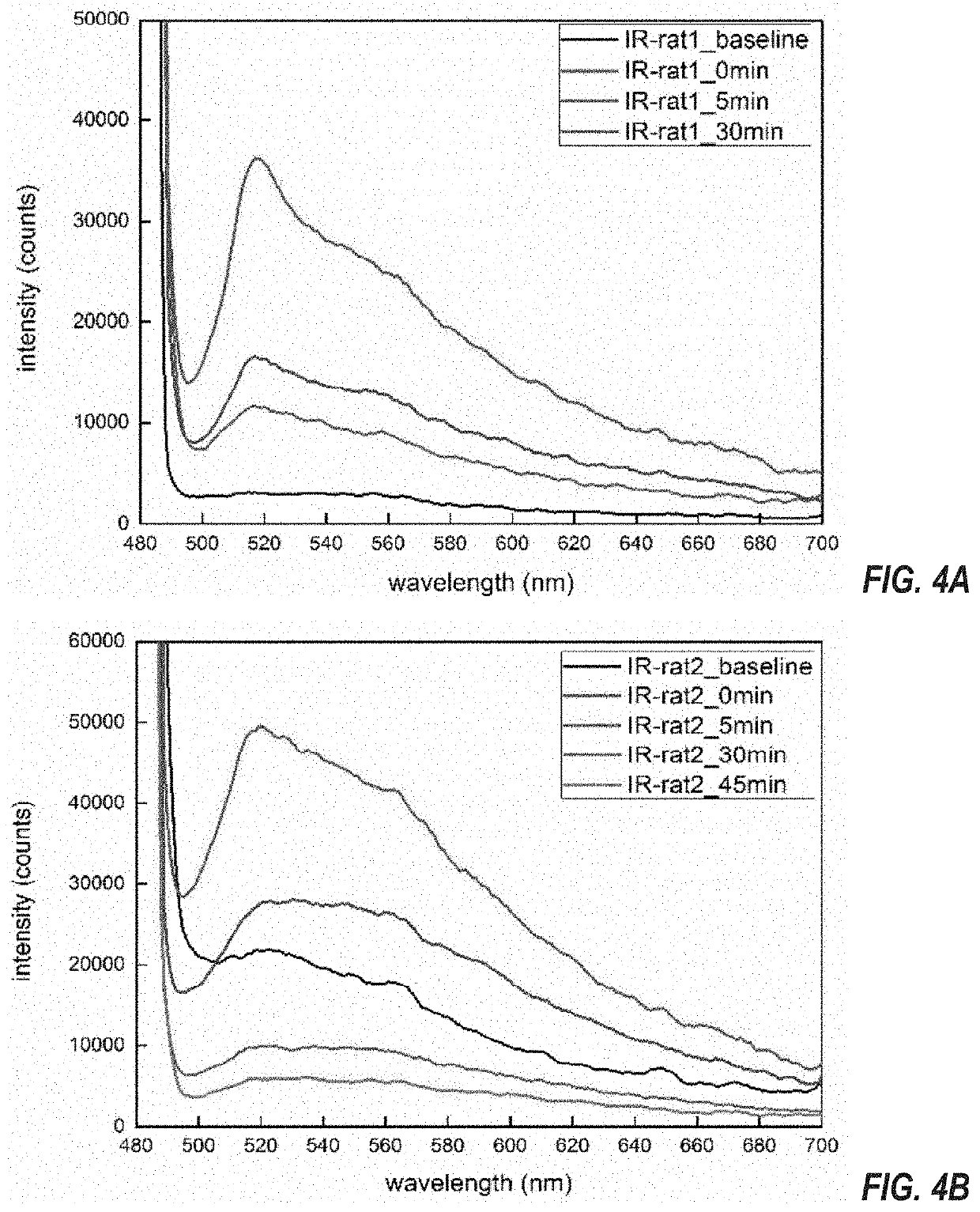Systems and methods for detecting tissue ischemia and evaluating organ function using serum luminescence
a tissue ischemia and luminescence technology, applied in the field of noninvasive detection and/or evaluation of organ function, can solve the problems of ischemia-reperfusion damage-induced organ failure, major risks, and inability to detect other ischemia, such as bowel ischemia or acute mesenteric ischemia, and achieve the effect of improving the diagnostic accuracy and reducing the risk of organ failur
- Summary
- Abstract
- Description
- Claims
- Application Information
AI Technical Summary
Benefits of technology
Problems solved by technology
Method used
Image
Examples
example 1
[0112]Methods for detecting tissue ischemia, as provided herein, were validated using a rat model of mesenteric ischemia. Referring now to FIG. 1, the absorption spectra of water and rat serum at 0-, 5-, 20-, and 45-mintues poste mesenteric ischemia are shown. Briefly, rat serum was obtained from male Wistar rats aged between 7 and 9 weeks with a mass of 250-300 g that were subjected to a model of mesenteric ischemia. Rats were initially anesthetized with gas and the the fistul at the rats' carotid artery was grafted. The rats' abdominal cavity was opened, and prior to using two clips to clip the superior mesenteric artery (SMA), a “baseline” blood sample was collected from the fistula. The SMA was then clipped to stop the blood flow to the intestines, thereby simulating human mesenteric ischemia in the rat model. Blood samples were collected at different ischemic time points, and blood was reperfused in the SMA at the end of the ischemia stage by removing the clips. After reperfusi...
example 2
[0124]Embodiments of the present disclosure enable systems and methods for detecting organ dysfunction and were validated using two optical systems to perform ICG fluorescence dosimetry on rats developing hepatocellular carcinoma (HCC).
[0125]One optical system used was a multiphoton microscope, which can non-invasively identify the location of vessels in vivo from sectioning two-photon fluorescence imaging. Time-course dynamics of concentration decay were also analyzed by the signal intensity within vessels. The other tested optical system was a point excitation and time course measurement using a 785 nm laser. The results demonstrate that ICG fluorescence dosimetry can reflect the disorder of at least liver function with the development of HCC and likely extends to the detection of other organ dysfunctions.
[0126]As shown in the diagram of FIG. 11, the multiphoton microscopy system used the scanning inverted microscope system of Leica DMI 3000M. The laser source was the femtosecond ...
PUM
 Login to View More
Login to View More Abstract
Description
Claims
Application Information
 Login to View More
Login to View More - R&D
- Intellectual Property
- Life Sciences
- Materials
- Tech Scout
- Unparalleled Data Quality
- Higher Quality Content
- 60% Fewer Hallucinations
Browse by: Latest US Patents, China's latest patents, Technical Efficacy Thesaurus, Application Domain, Technology Topic, Popular Technical Reports.
© 2025 PatSnap. All rights reserved.Legal|Privacy policy|Modern Slavery Act Transparency Statement|Sitemap|About US| Contact US: help@patsnap.com



